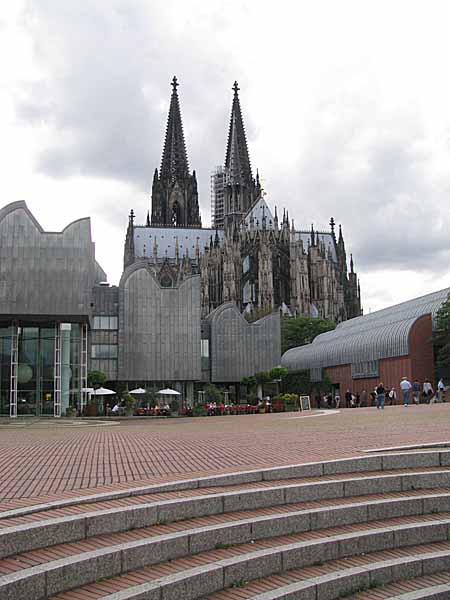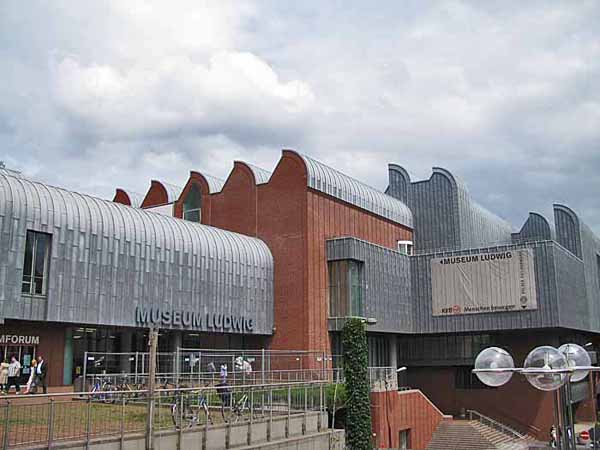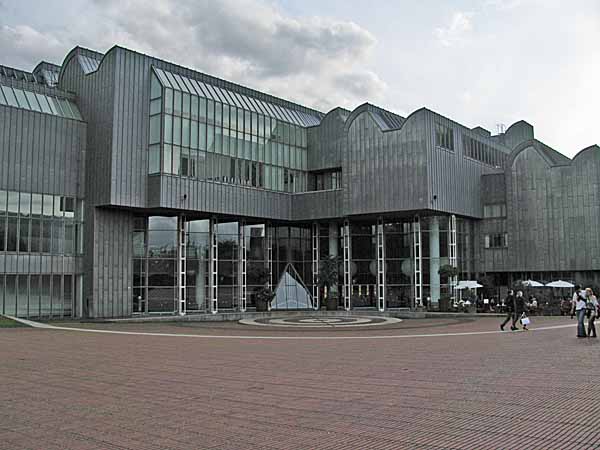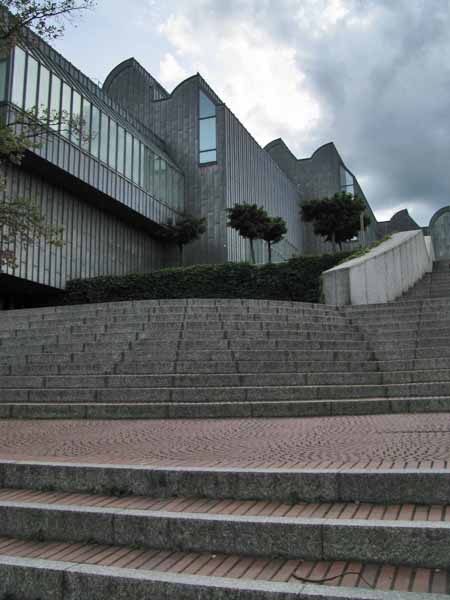| Architect |
Peter Busmann and Godfrid Habere |
| Date
Built |
Opened 1986 |
| Location |
Heinrich-Böll-Platz |
|
Behind the
Cathedral in
Koln the land drops away down to the
Rhine. Pedestrians walk
through Heinrich-Böll-Platz and down a
series of steps before reaching
the river. It is on this hillside
that the Ludwig Museum
sits.
 The modern building was once also home to the Wallraf-Richartz Museum until it was decided in 1994 to separate the two institutions and hand this building over to the exclusive use of the Museum Ludwig. The Museum
Ludwig's
website points out that the museum
occupies, "An area of 260,000
cubic metres of space - half the volume
of Cologne Cathedral."
Despite its rather vast space, the museum
says that it avoids appearing
oppressive because of, "the neatly arranged
and carefully structured shape of the
complex, exemplified in the
zinc-clad shed roofs. The grey covering
material extends a long way
down the supporting walls, giving the
building its distinctive overall
appearance. The facades have a brick
finish consisting of vertical rows
that enliven the surface structure.
Another reason for the lack of
oppressiveness is that the architects
placed below ground those parts
of the complex that do not require
daylight. These include the
mechanical service rooms, the parking
spaces and the concert hall."
The saw-tooth roof arrangement was designed to provide evenly distributed northern light into the galleries which is augmented by artificial light. |
|
|
Ludwig
Museum -
Heinrich-Böll-Platz, Cologne, Germany

 Close Window  |
